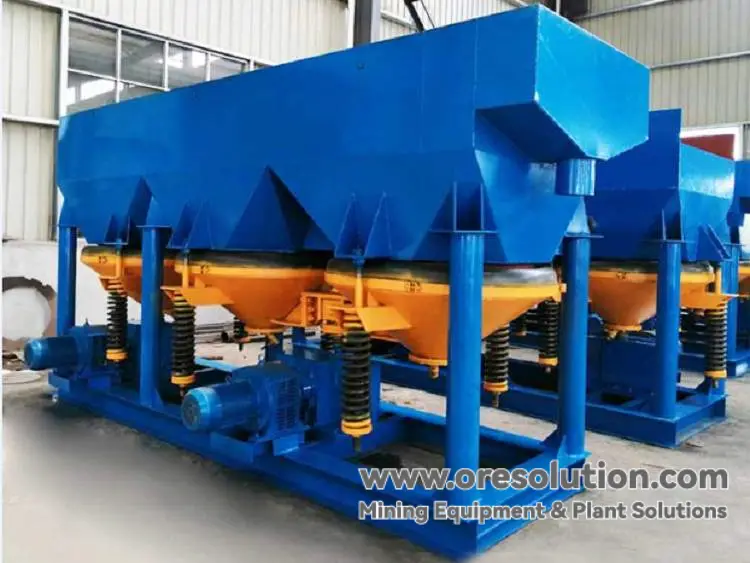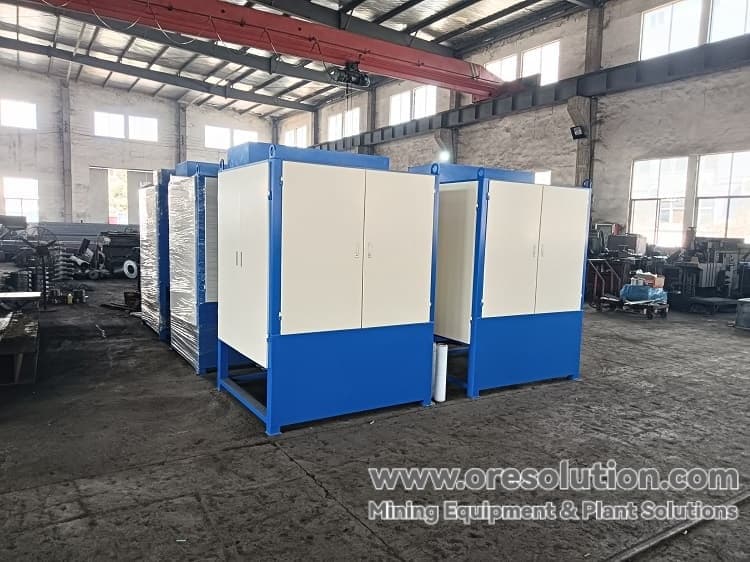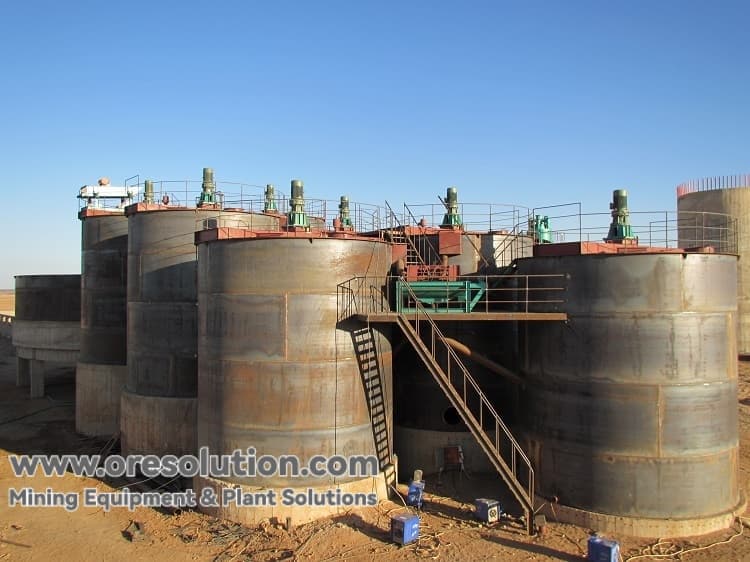Definition and classification of mineral beneficiation process full analysis
Beneficiation process definition and classification in full: the science and art of going from ore to concentrate
Abstract: Beneficiation is the key bridge between natural ores and industrial materials. The purpose of this article is to deeply analyze the definition of the beneficiation process, the core objective and its systematic classification, to bring you a comprehensive understanding of the science and art of "removing the roughness and extracting the essence" of the mineral resources.
First, the definition and core objectives of mineral processing technology
1. What is mineral processing technology?
Beneficiation process, also known as mineral processing, is a series of engineering processes based on physical or chemical principles. Its fundamental objective is to separate the useful minerals from the unwanted veins (waste rock) in the mined ore and enrich them into a high-grade concentrate product, while maximizing the recovery of valuable elements.
You can think of it as a sophisticated "mineral blind date": through a specific method, the useful minerals that are "in love" (similar in nature) are brought together, while the chalcopyrite impurities that are "out of place" are brought together. The "out-of-place" chalcopyrite impurities are invited out of the meeting.
2. Core objectives of the beneficiation process
-
Enrichment and purification: Significantly increase the content (grade) of useful minerals to meet the requirements of subsequent smelting or industrial applications. For example, the grade of mined copper ore may be as low as 0.5%, but after beneficiation, the grade of the copper concentrate can be increased to more than 20%.
-
Separation and Recovery: Separate multiple useful minerals co-born in the ore from each other, and enrich and recover each of them to realize the comprehensive utilization of resources. For example, from the lead-zinc ore to separate lead concentrate and zinc concentrate.
-
Removal of harmful impurities: eliminating elements that are harmful to subsequent smelting or product performance, such as phosphorus, sulfur, arsenic, etc.
-
Preparation for subsequent processes: Provide downstream industries such as smelting and chemical industry with raw materials of uniform specifications and stable composition.
-
Economy and environmental protection: through the pre-waste, significantly reduce the amount of transportation and smelting, reduce the overall cost; at the same time, centralized treatment of tailings, reduce the impact on the environment.
Second, the systematic classification of ore dressing process
Beneficiation process is categorized in a variety of ways, the core is divided according to the principle on which the separation is based. Can be divided into physical beneficiation method, physical and chemical beneficiation method and chemical beneficiation method of three major systems.
(A) physical beneficiation method
Mainly based on the physical properties of minerals (such as density, magnetism, electrical properties, color, etc.) differences in sorting, the process does not change the chemical composition of minerals.
1. Gravity separation method
-
Separation principle: the use of different mineral particles between the density difference in the fluid (water or air) medium in the different state of motion (such as different settling speeds) for sorting.
-
The main process and equipment:
-
Jigging: in the vertical rise and fall of the variable speed water flow, so that the mineral bed loose, according to the density of stratification.
-
Shaking table beneficiation: in the asymmetric reciprocating movement of the bed, the use of water and mechanical vibration of the combined effect of the mineral according to the density and particle size band.
-
Spiral chute beneficiation: slurry flow in the spiral chute, in the centrifugal force, gravity, friction under the joint action of the mineral particles of different densities to achieve separation.
-
Centrifugal concentrator: Utilizing the powerful centrifugal force field, it can strengthen the recovery of heavy minerals in micro-fine particle size.
-
-
Applicable minerals: gold, tin, tungsten, lead, zinc, iron, manganese, coal and other minerals with significant density differences.
2. Magnetic separation
-
Separation principle: using the difference of magnetism between mineral particles, in the uneven magnetic field by different magnetic force, so as to realize the separation.
-
Classification:
-
Weak magnetic field magnetic separation: for strong magnetic minerals (such as magnetite).
-
Strong magnetic field magnetic separation: used for weak magnetic minerals (such as hematite, ilmenite, manganese ore).
-
High gradient magnetic separation: can separate the very fine grained weakly magnetic minerals.
-
-
Applicable minerals: magnetite, ilmenite, tantalum-niobium ore, etc., also widely used in quartz, feldspar and other non-metallic minerals in addition to iron purification.
3. Electrostatic separation method
-
Separation principle: the use of minerals in the electrical properties (conductivity, dielectric constant) on the differences in the high-voltage electric field by different electric forces for separation.
-
Applicable minerals: Commonly used in scheelite and cassiterite separation, titanium-zircon ore sorting, diamond sorting, etc. 4.
4. Photoelectric beneficiation method / picking method
-
Sorting Principle: Using the differences in the optical properties of minerals on the surface (color, reflectivity, fluorescence, X-ray transmittance, etc.), the sensor detects and commands the actuator (such as a high-pressure air gun) to blow out the target mineral particles.
-
Applicable minerals: diamond, precious stone, ore pre-polishing waste, from the ore to remove large waste rock.
(ii) Physico-chemical beneficiation (flotation)
This is the most widely used, one of the most important beneficiation methods, the sorting process involves both physical and surface chemical effects.
-
Separation principle: the use of mineral particles on the surface of the hydrophobicity of the difference in physical and chemical properties. By adding flotation chemicals, the hydrophobicity of useful minerals is selectively enhanced. In the aerated slurry, the hydrophobic mineral particles can attach to the air bubbles and then float up to the surface of the slurry to form a foam layer, which is scraped out and collected; while the hydrophilic vein particles remain in the slurry.
-
Key Elements:
-
Trapping agent: Selectively adsorbs to the surface of the target mineral, making it hydrophobic.
-
Foaming agent: Promotes the formation of stable, medium-sized bubbles in the slurry.
-
Adjusting agent: Adjusting the surface properties of minerals and the chemical environment of the slurry to enhance the selectivity of sorting.
-
-
Applicable minerals: most non-ferrous metals (copper, lead, zinc, molybdenum, nickel), rare precious metals, sulfide minerals and graphite, apatite, fluorite and other non-metallic ores. The wide range of minerals handled, so that it has become the "trump card" of the beneficiation process.
(C) chemical beneficiation method
When the minerals embedded in very fine particle size or physical properties are very similar, need to use chemical reactions to separate and extract.
-
Separation principle: the use of minerals in the chemical nature of the difference, through the chemical solvent (leaching agent) and ore reaction, the valuable components in ionic form dissolved into solution, and then from the solution will be recovered.
-
The main process:
-
Leaching: The use of solvents such as acids, alkalis, and salts to dissolve the target metal (e.g., leaching gold with cyanide, copper oxide with sulfuric acid).
-
Precipitation/replacement: precipitation of the metal from the leach solution by chemical replacement or pH adjustment.
-
Solvent extraction-electrowinning: Selective enrichment of metal ions in solution using organic solvents, followed by electrolysis at the cathode to precipitate high-purity metals (e.g., SX-EW process for copper).
-
Roasting: Changing the chemical composition of the ore at high temperatures to make it more amenable to subsequent processing (e.g., roasting difficult-to-select hematite to easy-to-select magnetite).
-
-
Applicable minerals: copper oxide, gold, uranium, bauxite and so on.
Third, the typical beneficiation process
A complete modern mineral processing plant is usually an optimized combination of the above methods to form a synergistic and efficient system. A typical process includes:
-
Preparation: crushing and screening - the raw ore is crushed to a size suitable for separation.
-
Sorting: Grinding and Classification - the crushed product is ground to a size at which the mineral monomers are dissociated and a closed circuit is formed with the classifier. This is followed by the main sorting process (re-election, magnetic separation, flotation or a combination of these processes).
-
Product treatment: Thickening, filtration, drying - dewatering of the concentrate to obtain a solid product for transportation and storage. Safe disposal of tailings is also carried out.
Beneficiation process is a complex and profound cross-discipline, which integrates geology, physics, chemistry, fluid mechanics and materials science. There is no "one-size-fits-all" process that can handle all ores, and a successful beneficiation solution is inevitably based on a deep understanding of the nature of the ores, the flexible application of various process principles, and thus the design of the best technical and economic solutions. It is the key core technology that ensures the efficient and clean utilization of mineral resources and ultimately transforms them into social wealth.



